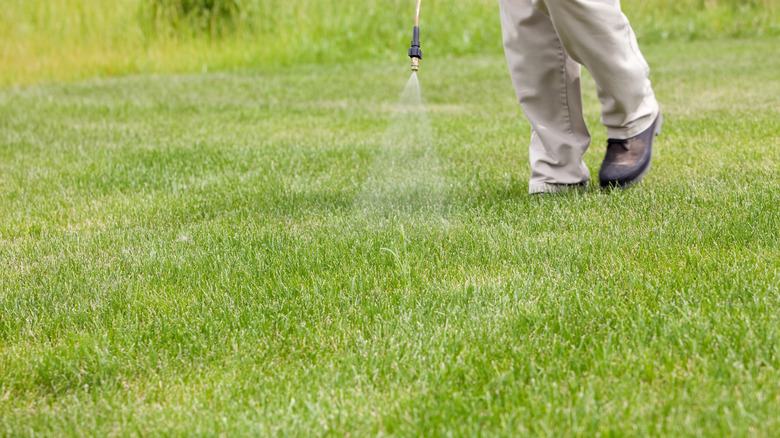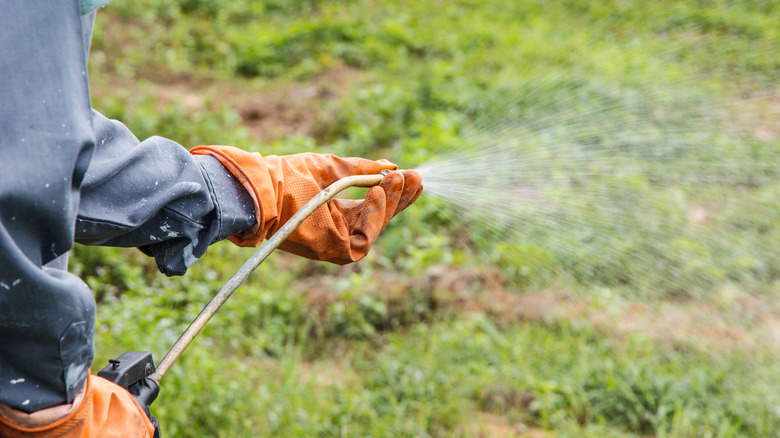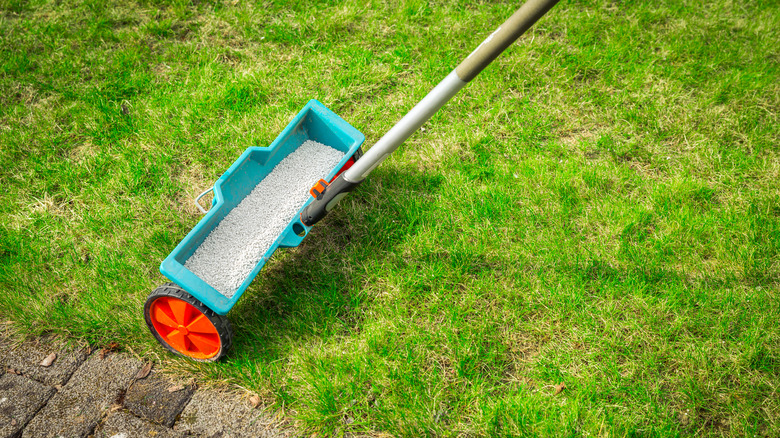Is It Worth It To Use Pre-Emergent On Your Grass If You're Already Seeing Weeds?
One inevitable part of having a lawn is dealing with weeds. These opportunistic, parasitic plants sprout up from the soil to drain the life out of your grass by sucking up all the nutrients it has to offer. They grow rapidly and spread like wildfire, and a lot of them are hard to get rid of once they've started growing. This is why people apply pre-emergent herbicides to nail them while they are still seedlings, hence the name. Unfortunately, if you're not attentive enough and miss the period of application, it's not worth it to use pre-emergent on visible weeds.
Pre-emergence herbicides actually attack germinated seeds by stopping them from developing their root and shoot systems. Seeds are typically strong and durable, but once they hit the germinated seedling phase when it's time to start internal growth, they're pretty vulnerable. This is when the pre-emergent strikes.
Pre-emergent is applied to the soil in liquid or solid form and gets activated by moisture when you water the area. This helps it spread its surface area and cover the weed seedlings underground. Once the seedlings touch the herbicide in their quest to take root and shoot up, they die. This is why it won't work on already-emerged weeds.
Timing is the most important step
Because pre-emergence herbicides only work on germinated seedlings that are about to take their next steps into independent life, timing the application is tantamount to its success. It helps to know what type of weeds you're dealing with and understand their life cycles. Then, you can be sure which pre-emergent is best to tackle the problem. There are pre-emergent herbicides for every yard type — be it for your grass, your flower garden, or specific weed species. Be sure to follow the labels, or consult a weed specialist or botanist if you're having trouble figuring out what to use.
The ideal time for pre-emergent application is one to two weeks before the weed seeds germinate. This typically puts the time anywhere from early spring to the summer. Once again, the type of weed you're facing makes all the difference. Late-bloomer weed seeds such as grassy weeds will require pre-emergent application later in the spring or early summertime compared to early-bloomer seeds that germinate as soon as the ground thaws out.
One thing about pre-emergence herbicides is that they can become redundant with an increase in temperature. This is because even though it's insoluble, the herbicide is broken down by soil microorganisms that regain activity during the warm season. During the colder months, these microbes were more or less dormant. The earlier the application, the better for your lawn.
How to apply the pre-emergent to your lawn
When you've researched what weeds are predominant in your yard and have found the right pre-emergent to use, you need to apply it at the most opportune time. This may sound backward, but if you have a weed problem in your garden and you are using a pre-emergent, then you should want as many weed seeds to germinate as possible. If they don't germinate, you can apply the pre-emergent from now until the next ice age — it won't have the effect you're looking for.
Follow the instructions on the herbicide label to the tee. If it's in granular form, then you have to use a spreader to apply it evenly across your garden or lawn as specified. If it's a liquid pre-emergent, pour it into a sprayer so that you can cover more ground uniformly. Make sure the ground gets a healthy dose of water afterward. If you live in a rainy zone, then rainfall would be great. If you have to settle for your sprinkler, do so.
The length of time that pre-emergent weed killer lasts is dependent on its chemical makeup, the soil type, and the activity of the soil microbes. Some pre-emergents have a longer-lasting effect than others, but they typically have a lifespan of at least a few months. Hopefully, it's enough time to kill as many weed seedlings as they can.


